Forever, Americans have admired the bald eagle as a symbol of freedom, strength, and resilience. But shockingly, it wasn’t officially recognized as the national bird—until now. On Tuesday, December 24th, President Joe Biden signed legislation formally declaring the bald eagle the official bird of the United States.
The eagle has graced the Great Seal since 1782, but its status was never codified until now. From its unmatched vision to its ability to swim, here are 18 fascinating facts about this majestic bird that prove it’s more than just a symbol—it’s a legend.
1. Benjamin Franklin Thought the Bald Eagle Was Unworthy
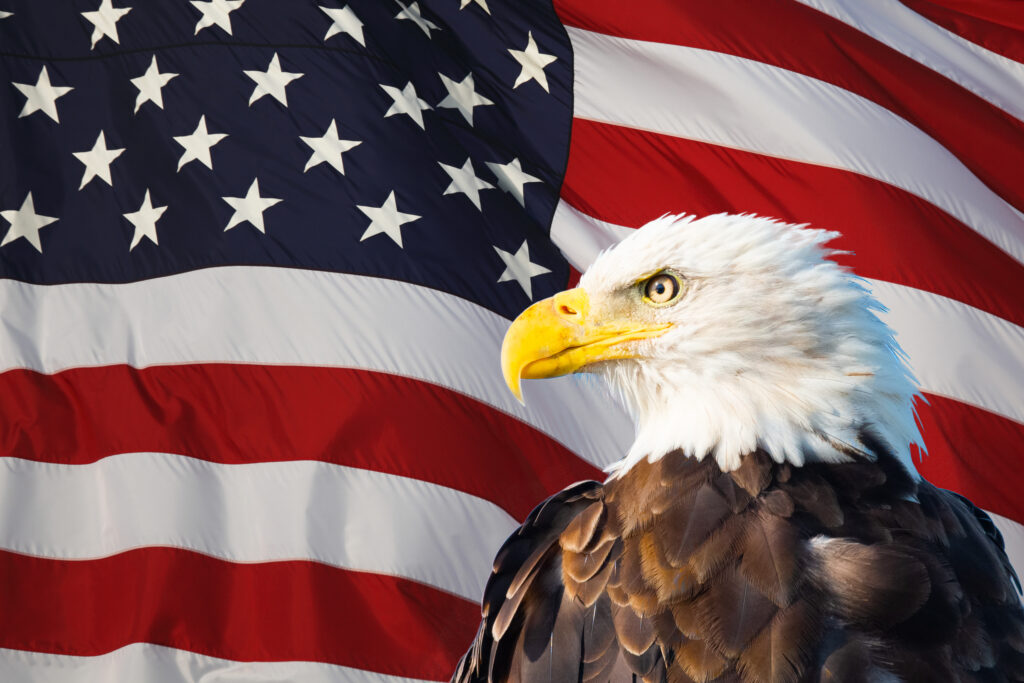
Shutterstock: BrianEKushner
Benjamin Franklin famously criticized the bald eagle, calling it lazy and a “bird of bad moral character.” His complaint stemmed from the eagle’s habit of stealing food from other birds. Instead, Franklin proposed the turkey as America’s national bird, arguing that it was brave, intelligent, and uniquely American. While the turkey had its supporters, the bald eagle ultimately won for its regal appearance, strength, and hunting prowess. Today, it’s hard to imagine Franklin’s choice of the Great Seal—but it’s an amusing reminder of how close we came to celebrating a very different symbol.
2. The Turkey Was Almost America’s National Bird
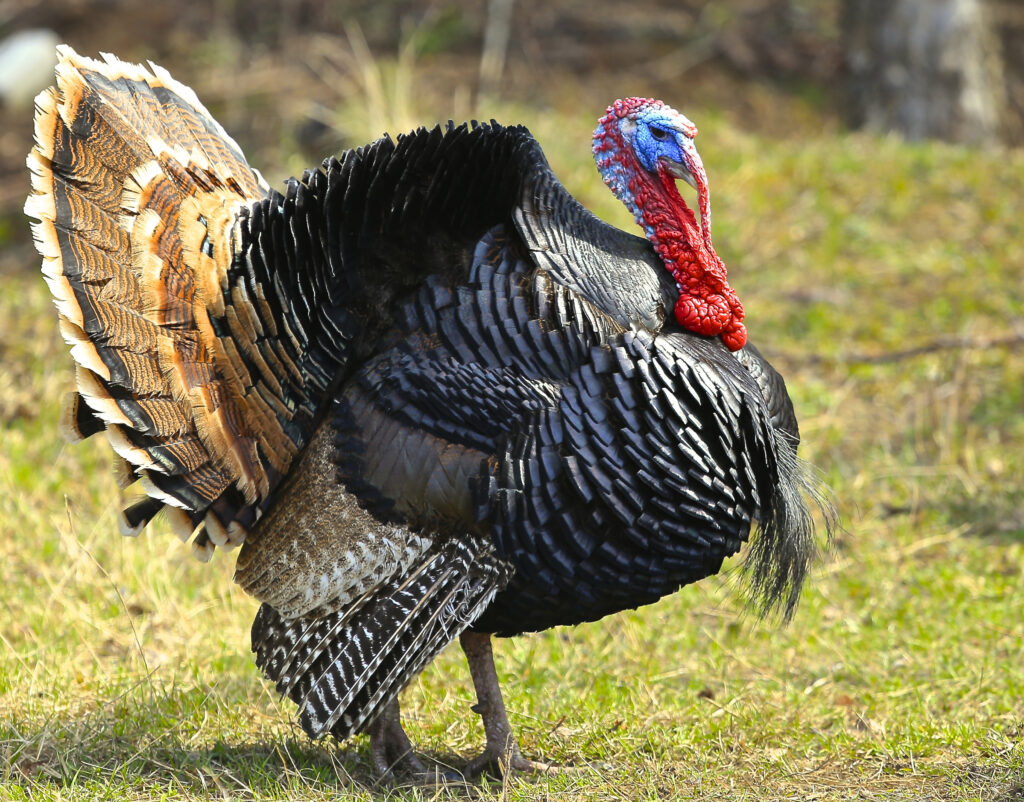
iStock: sergeyparys
Franklin’s endorsement of the turkey wasn’t just a joke—it was seriously considered as the national bird. Many admired the turkey for its intelligence, resourcefulness, and ties to early American agriculture. However, the bald eagle’s commanding presence and ability to soar above the landscape made it a more fitting symbol of freedom and independence. While the eagle ultimately triumphed, the turkey’s near-victory remains a quirky footnote in history. Imagine Thanksgiving featuring a bird that doubled as our national emblem—it would’ve been a strange twist to tradition!
3. The Bald Eagle’s Symbolic Role Began in 1782

Wikipedia
The Bald eagle became a national symbol when it was chosen for the Great Seal of the United States in 1782. The seal features the eagle clutching an olive branch and arrows, representing peace and strength in balance. Over the years, the eagle’s image has been used on coins, military insignias, and government documents, cementing its role as a symbol of America’s ideals. However, Congress never officially declared it the national bird until President Biden signed legislation in 2024. This historic decision corrected a 240-year oversight and gave the bald eagle its rightful place in law.
4. Native Americans Revered It Long Before 1782
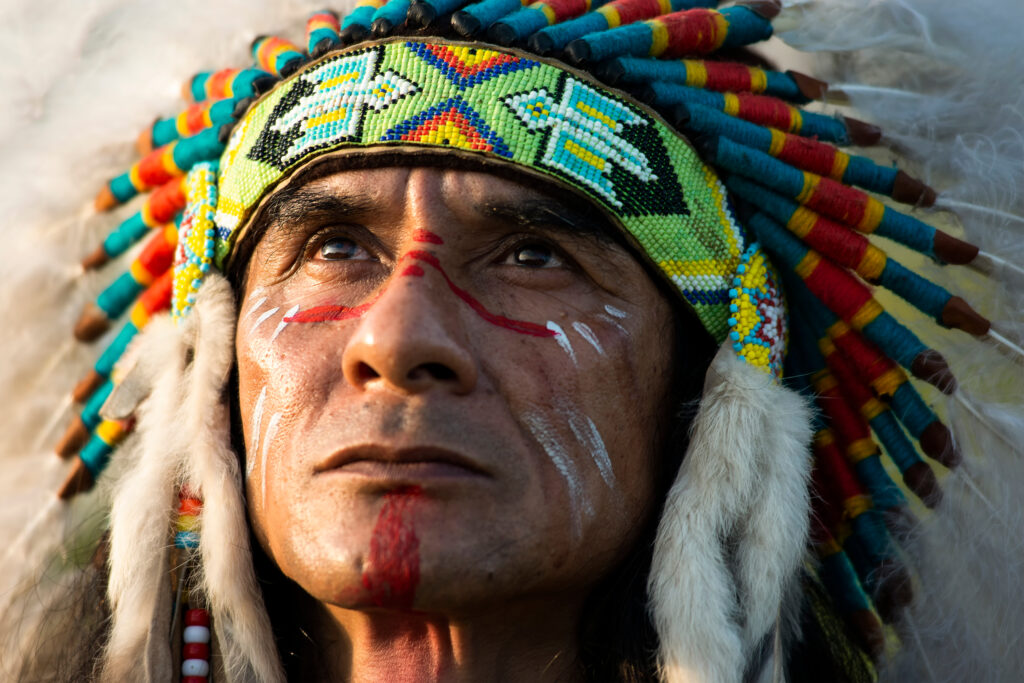
Shutterstock: Tanison Pachtanom
Long before the Bald Eagle became a national symbol, it held deep spiritual significance for Native American tribes. Many believed the eagle was a messenger between humans and the divine, carrying prayers to the heavens. Its feathers were considered sacred and were used in ceremonies to symbolize courage, wisdom, and leadership. Spotting an eagle in the wild was a sign of divine guidance or protection. The eagle’s role in Native American culture underscores its universal symbolism as a creature of power, vision, and freedom.
5. Bald Eagles Aren’t Actually Bald
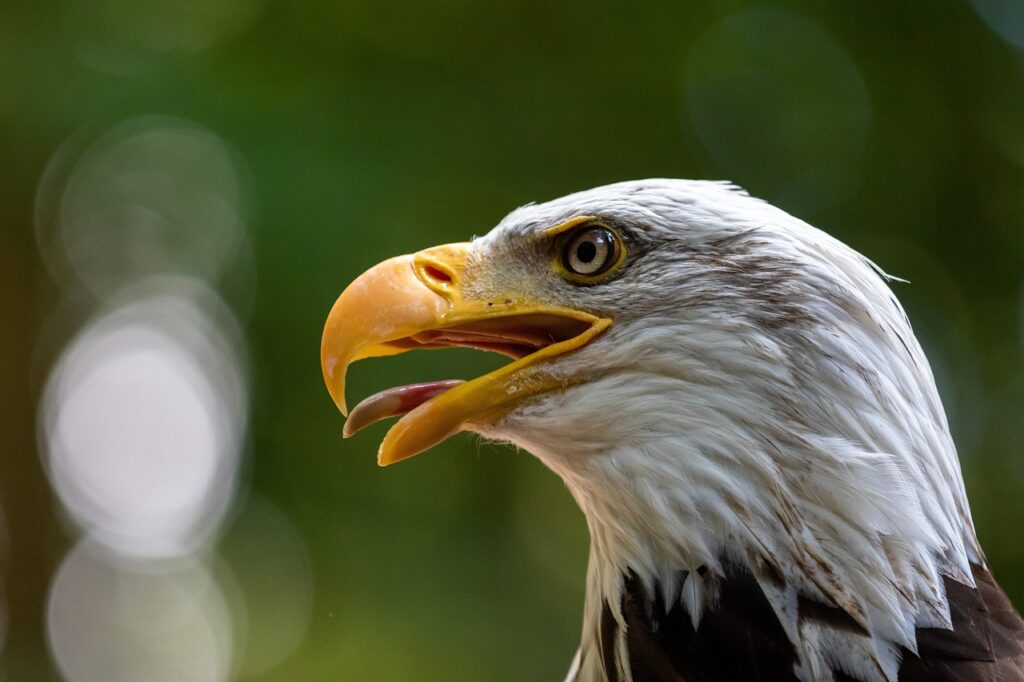
Pixabay: herbert2512
Despite their name, bald eagles aren’t bald. Their white head feathers give the appearance of baldness, but the bird is fully feathered. The term “bald” comes from the old English word “balde,” meaning white, which refers to their striking head coloration. Combined with their sharp golden beaks and piercing eyes, bald eagles are one of the most recognizable birds in the world. Their majestic appearance perfectly matches their role as a symbol of independence, resilience, and authority.
6. Bald Eagles Can See for Miles
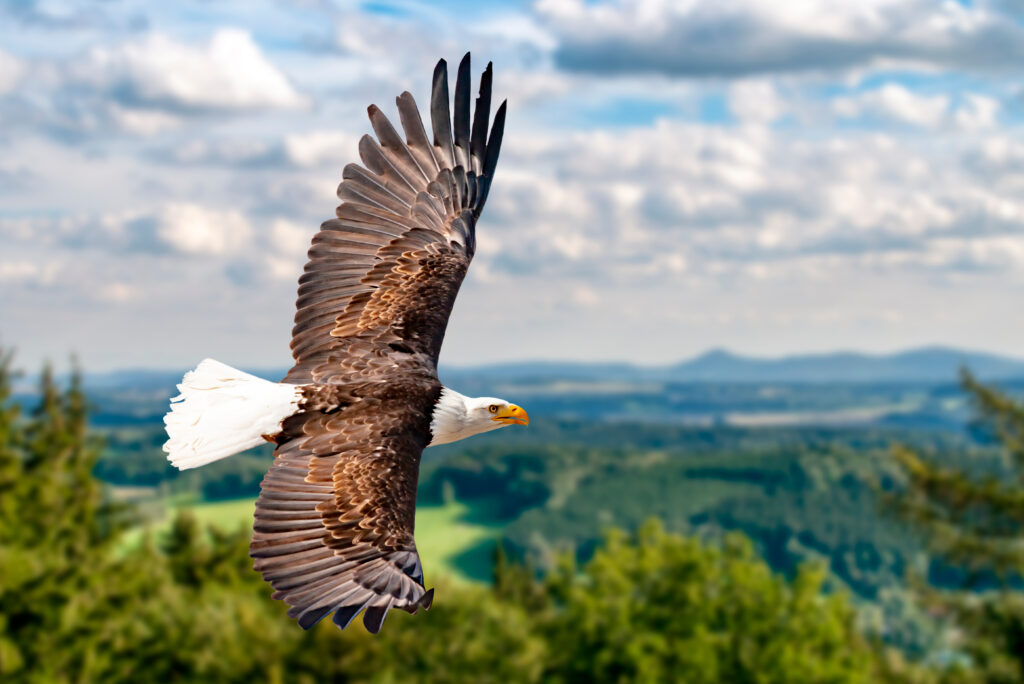
Shutterstock
Bald eagles have extraordinary eyesight. They can spot prey from over two miles away, thanks to their large eyes and specialized retinas that provide sharp focus and depth perception. Eagles can also see ultraviolet light, which enhances their ability to detect movement in water and foliage. This remarkable eyesight allows them to dive at speeds of up to 100 mph to snatch prey with pinpoint accuracy. Their piercing gaze makes them dominant predators—and a perfect metaphor for vigilance and leadership.
7. Bald Eagles Mate for Life and Build Massive Nests

iStock: Bob Gwaltne
Bald eagles are loyal partners, often mating for life. Together, they construct massive nests, known as aeries, which they return to and expand each year. Some nests measure over 9 feet wide and weigh nearly 3 tons! These enormous homes, perched high in trees or cliffs, provide safety for their eggs and young. The eagle’s dedication to family and its ability to work as a team symbolizes unity and resilience. With their awe-inspiring nests, bald eagles prove they are not only skilled hunters but also exceptional builders.
8. Bald Eagles Can Swim When Necessary
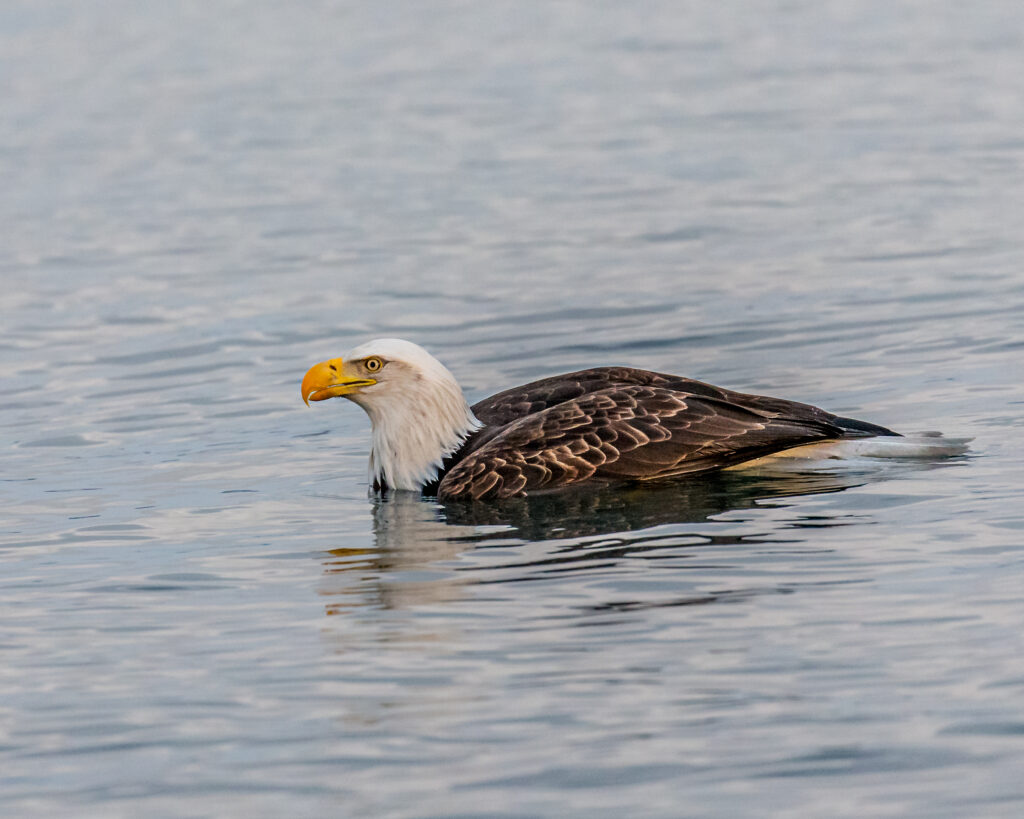
iStock: Andy Morffew
It might surprise you, but bald eagles can swim! When a catch is too heavy to carry in flight, they use their powerful wings to paddle to shore like oars. This behavior, though rare, showcases their adaptability and determination to secure a meal. Watching an eagle swim is a fascinating and unexpected sight that highlights the bird’s versatility. Whether soaring through the skies or paddling through the water, bald eagles prove they are masters of survival in any element.
9. Juvenile Bald Eagles Look Completely Different
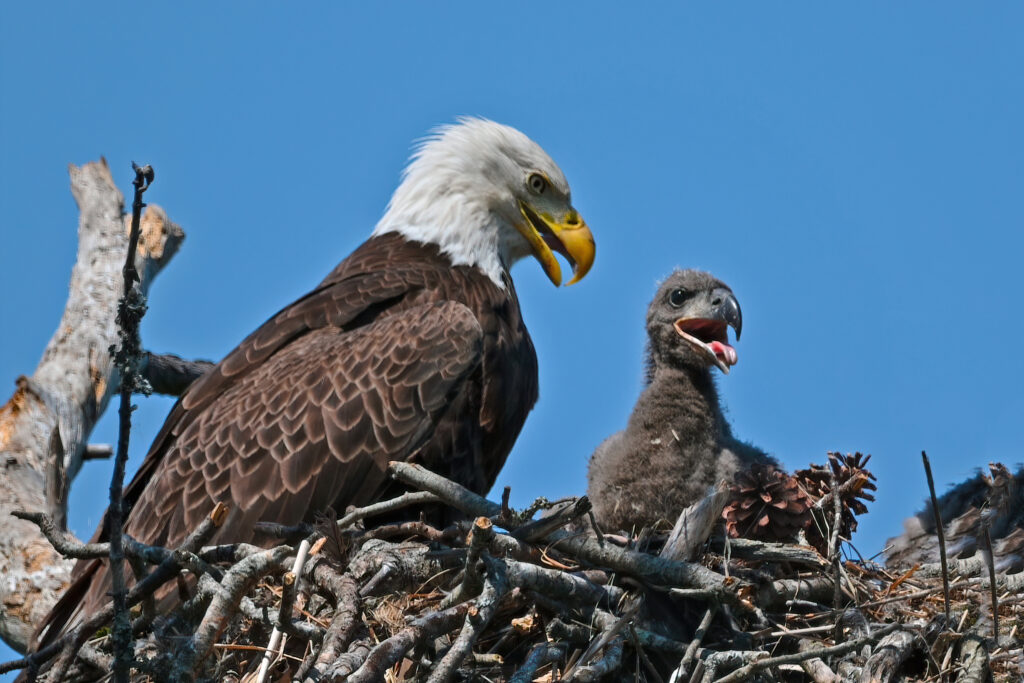
iStock: BrianEKushne
Young bald eagles don’t develop their iconic white heads and tails until they’re about five years old. Instead, juveniles are covered in mottled brown feathers that help them blend into their environment. This camouflage not only protects them from predators but also distinguishes them from adult eagles. Many people mistake juveniles for golden eagles because of their similar coloring. This gradual transformation into their striking adult appearance mirrors the growth and maturity they symbolize as America’s national bird.
10. Bald Eagles Were Almost Driven to Extinction
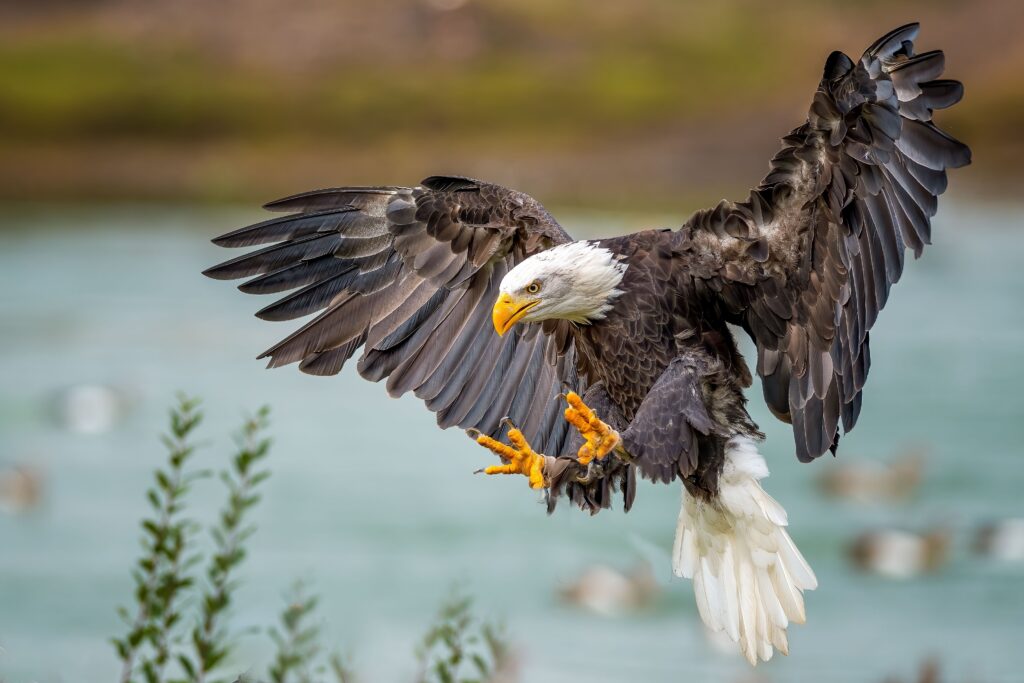
Shutterstock
In the 20th century, bald eagle populations plummeted due to habitat loss, hunting, and the widespread use of the pesticide DDT, which weakened their eggshells. By the 1960s, fewer than 500 nesting pairs remained in the continental U.S. Conservation efforts, including the Endangered Species Act and a ban on DDT, led to a remarkable recovery. Today, bald eagles are thriving, with over 300,000 across North America. Their comeback is one of the greatest environmental success stories, proving that resilience isn’t just symbolic—it’s real.
11. Bald Eagles Don’t Sound Like You Think
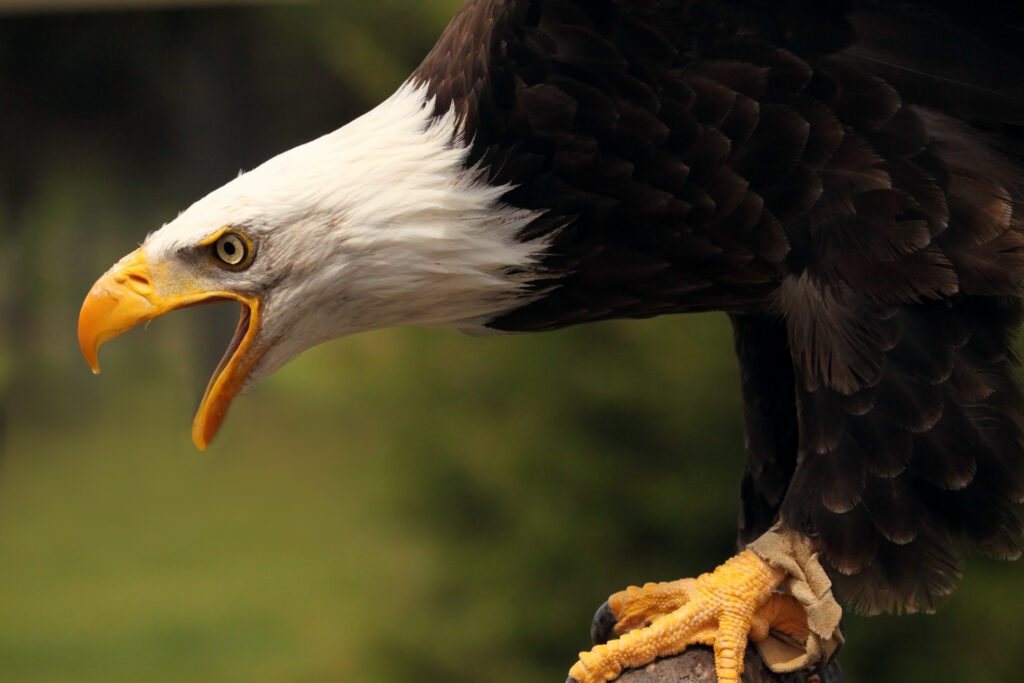
Shutterstock
Hollywood lied to us about the bald eagle’s cry. The dramatic, piercing screech you hear in movies isn’t their real call—it’s the sound of a red-tailed hawk. In reality, bald eagles produce high-pitched chirps, whistles, and soft cackles that are far less intimidating than their fierce appearance suggests. This might be surprising, given their status as apex predators. While their true sounds don’t match the drama of Hollywood, bald eagles don’t need a theatrical soundtrack. Their commanding presence in the wild is enough to earn them universal respect and admiration.
12. Benjamin Franklin’s Criticism Didn’t Stop the Eagle from Joining Him on the $100 Bill — and Coins
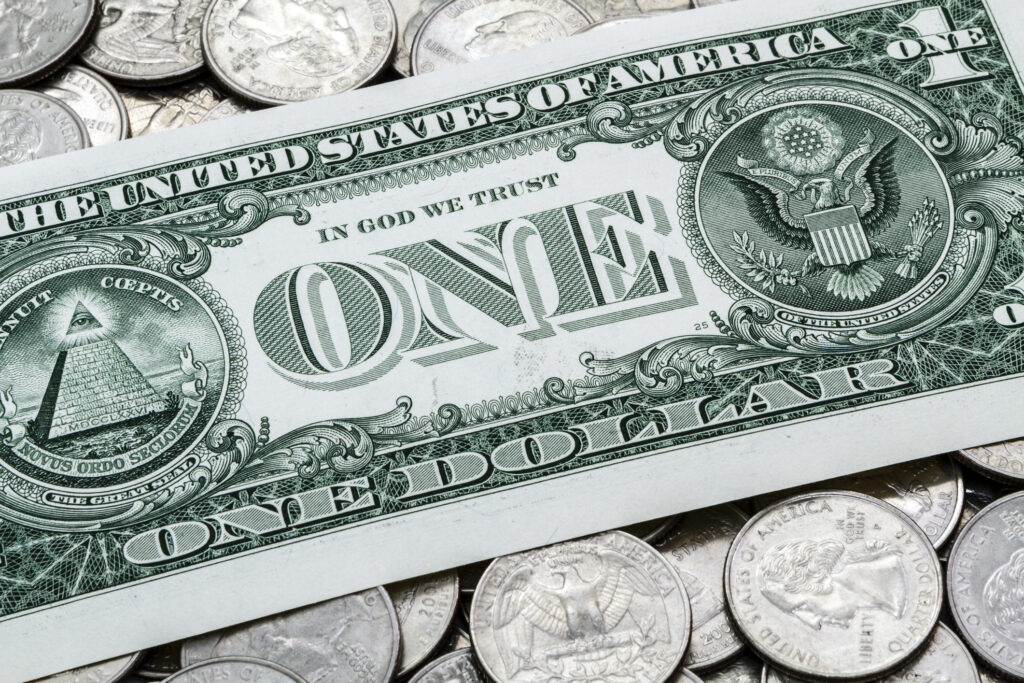
iStock: ScottNodine
Despite his harsh critique of the bald eagle, Benjamin Franklin’s legacy ironically intersects with the bird he once dismissed. Franklin famously called the eagle lazy and immoral, preferring the turkey as America’s national bird. Yet, the $100 bill—featuring Franklin’s portrait—also includes the bald eagle as part of the Great Seal. The eagle’s image extends beyond the bill, appearing on countless U.S. coins, from quarters to gold eagles. This pairing highlights how the bird Franklin criticized became one of the most enduring symbols of America’s strength and prosperity.
13. The Great Seal’s Design Is Packed with Symbolism

Wikimedia Commons
The bald eagle’s place on the Great Seal of the United States is steeped in meaning. In its talons, the eagle holds an olive branch to symbolize peace and 13 arrows to represent military readiness. Above its head, a cluster of 13 stars reflects the unity of the original colonies, while the shield on its chest features 13 stripes for strength and resilience. The eagle also faces the olive branch, emphasizing America’s preference for peace over conflict. This carefully crafted design ensures the bald eagle embodies the nation’s values at every level.
14. Bald Eagles Are Fiercely Territorial
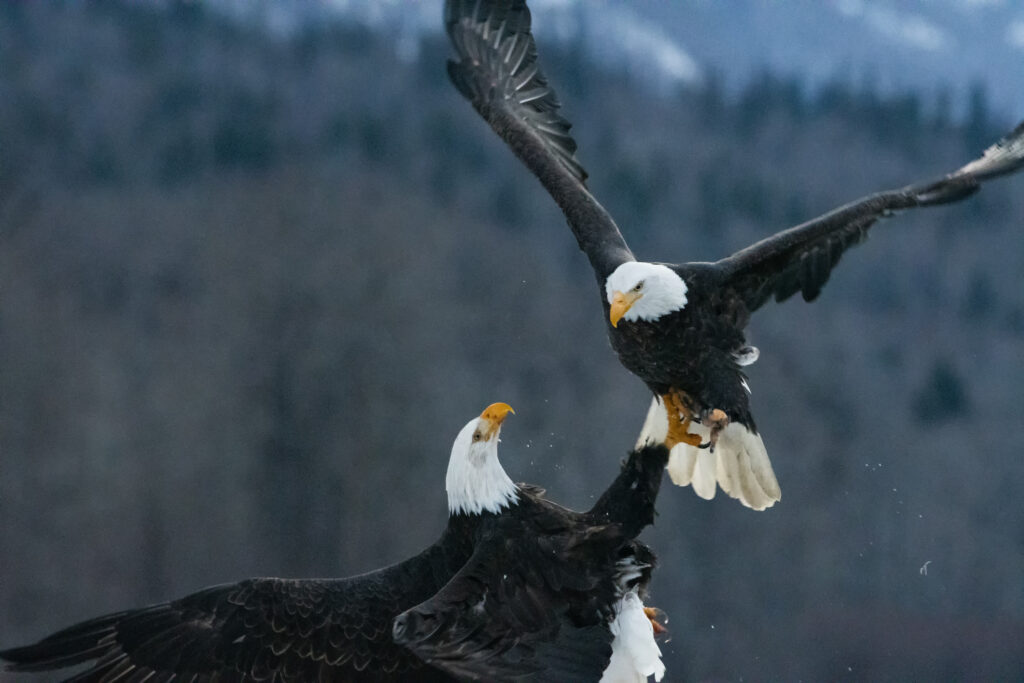
iStock: Credit:Khanh V Le
Bald eagles are not birds you want to mess with. They are fiercely territorial, especially during nesting season. They often chase away other raptors, like hawks and ospreys, to defend their territory. These battles can be dramatic, involving mid-air pursuits or talon-locking combat. Interestingly, bald eagles are also known to steal food from other birds in a behavior called kleptoparasitism. Despite being apex predators, they face challenges too—smaller birds like crows and ravens often mob them in groups to protect their nests. These aerial battles showcase the eagle’s dominance and determination in the skies.
15. Bald Eagles Can Fly for Hours Without Flapping Their Wings

Shutterstock
Bald eagles are masters of the skies, capable of soaring for hours without flapping their wings. Their massive wingspans, reaching up to 7 feet, allow them to ride thermal currents and conserve energy. This ability lets them travel long distances—sometimes over 100 miles in a single day—while scanning for prey below. Watching an eagle glide effortlessly high above is breathtaking and reminds us why they’re the ultimate symbol of freedom. Whether circling over rivers or soaring above mountains, their flight embodies the untamed spirit of independence that defines the United States.
16. Bald Eagles Can Live Up to 50 Years
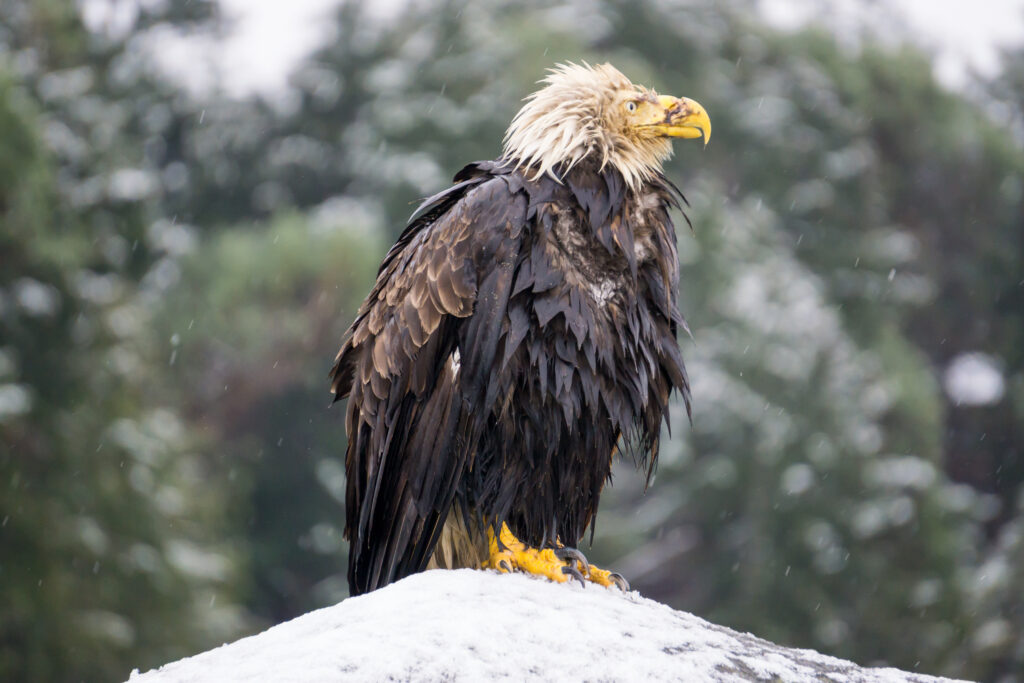
Shutterstock
Bald eagles have remarkably long lifespans, with most living 20–30 years in the wild. In captivity, where they’re safe from predators and receive consistent care, some eagles have lived to be 50 years old. Their ability to thrive for decades is a testament to their resilience and adaptability. Each eagle’s long life reflects its role as a symbol of endurance and strength. Their presence across generations makes them an enduring representation of America’s ideals—unwavering and timeless, just like the country they’ve come to represent.
17. They Have Few Natural Enemies—But Humans Are Their Biggest Threat

Adult bald eagles have few natural predators due to their size and strength. However, their eggs and eaglets can fall prey to raccoons, great horned owls, and other birds of prey. Historically, humans have been the eagle’s greatest threat, through hunting, habitat destruction, and the use of harmful pesticides like DDT. These dangers nearly wiped out the species in the 20th century. Today, thanks to conservation efforts, bald eagles have made a triumphant comeback. Their survival story reminds them of protecting nature for future generations.
18. Bald Eagles Inspired Military Symbols
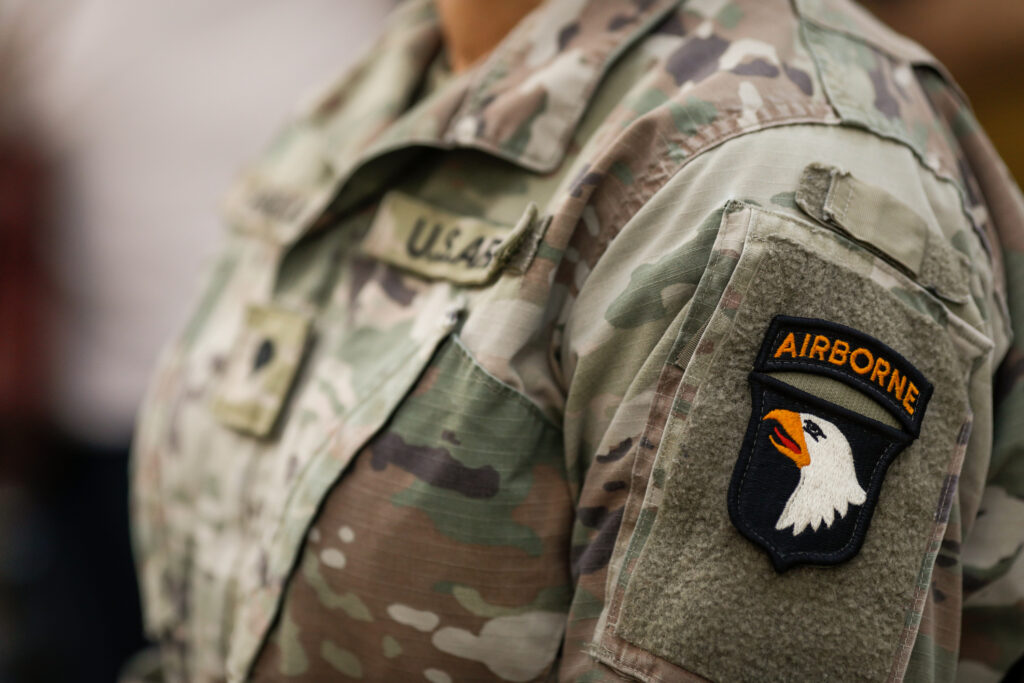
iStock: CatEyePerspective
The bald eagle’s strength and courage have made it a natural choice for military insignias. One of the most famous examples is the 101st Airborne Division, nicknamed the Screaming Eagles. Their emblem features a bald eagle mid-screech, symbolizing power, freedom, and readiness to defend. The eagle’s connection to the military extends to its role as a protector of the nation, both in the wild and in symbolism. By embodying the ideals of bravery and resilience, the bald eagle serves as a reminder of the sacrifices made to preserve America’s freedoms.
19. Bald Eagles Are Adaptable Survivors
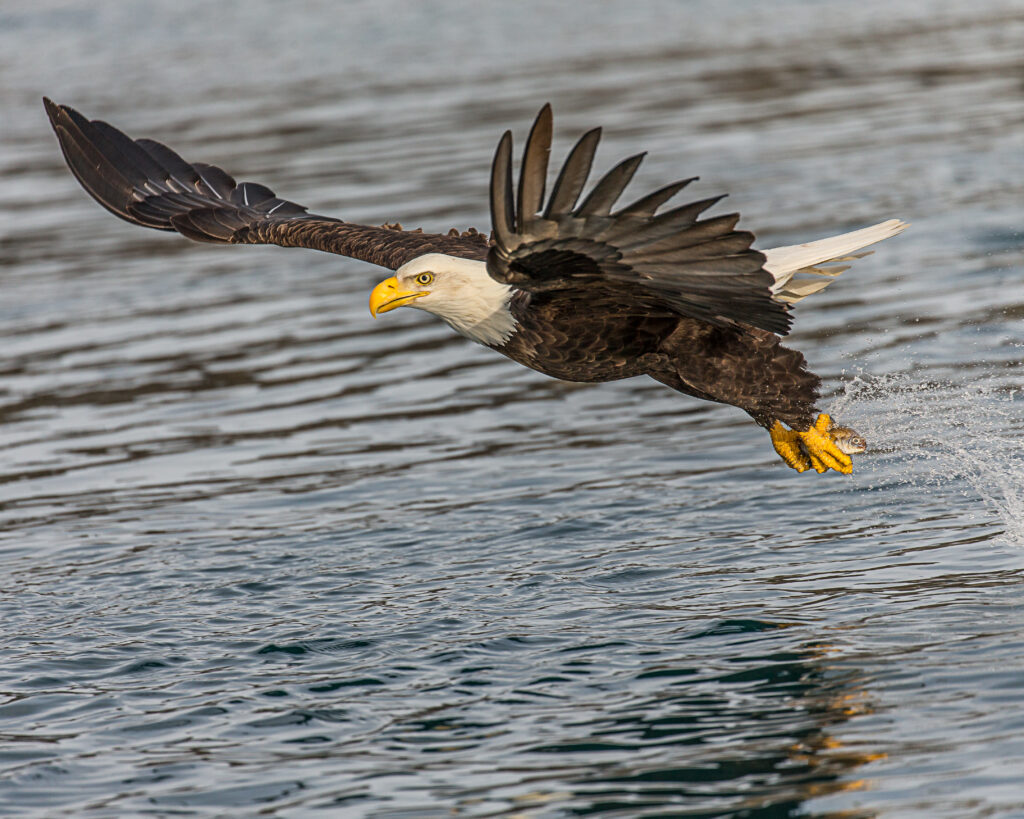
iStock: Andy Morffew
Bald eagles are incredibly adaptable, thriving in environments ranging from forests and wetlands to coastal regions and mountains. As long as they have access to water and plenty of fish, they can make their home in a variety of habitats. This adaptability has been key to their recovery, allowing them to reclaim territory even in regions previously affected by human development. Their ability to survive and thrive in changing conditions mirrors the resilience of the country they represent, making them a perfect symbol of strength, flexibility, and determination.
20. Why the Bald Eagle?

iStock
The founding fathers chose the bald eagle for its strength, hunting prowess, and regal appearance. As a species native to North America, it was a uniquely American choice. Its ability to soar to great heights and its commanding presence made it a fitting metaphor for freedom and independence. The eagle also draws on ancient Roman symbolism, where it represents power and authority. From its roots in Native American spirituality to its modern-day symbolism, the bald eagle embodies the resilience, strength, and untamed spirit of the United States.
The bald eagle’s journey from misunderstood bird to cherished national emblem is as inspiring as the ideals it represents. From its near extinction to its rightful recognition as the United States’ official bird, it remains a powerful reminder of resilience, freedom, and strength. Whether gliding effortlessly through the skies, fiercely defending its territory, or gracefully swimming to secure a meal, the bald eagle captures the spirit of America in every way. Now, with its status officially codified, it soars higher than ever—just as it should.


